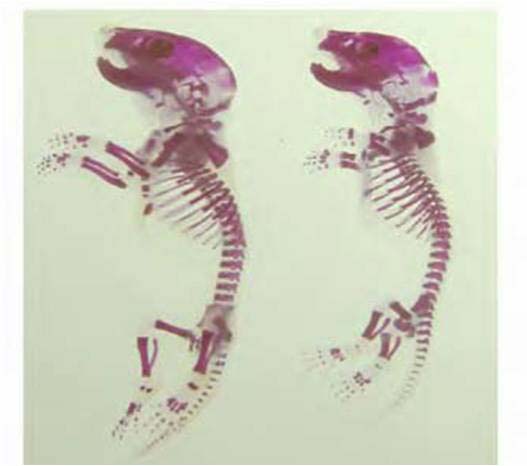ESET histone
methyltransferase is essential to hypertrophic differentiation of growth plate
chondrocytes and formation of epiphyseal plates
Yang L, Lawson KA, Teteak CJ, Zou J, Hacquebord J, Patterson D, Ghatan AC,
Mei Q, Zielinska-Kwiatkowska A, Bain SD, Fernandes
RJ, Chansky HA. Dev Biol. 2013
May 4. doi:pii: S0012-1606(13)00225-X. 10.1016/j.ydbio.2013.04.031. [Epub ahead
of print] PMID: 23652029

A team of researchers at the Department of Orthopaedics and Sports Medicine—led by faculty member, Liu Yang—have discovered that the protein ESET is fundamentally important in skeletal development. ESET is a histone methyltransferase that catalyzes methylation of histones on DNA. Their study used knock-out mice that were deficient in the ESET protein. Comparisons with wild type mice found several key differences in the knock-out mice: 1) chondroctyes rapidly underwent hypertrophy, depleting chondrocytes that would otherwise form the epiphyseal plate 2) long bone and trabecular (spongy) bone growth were significantly stunted. The researchers went further to explain how the ESET protein functions biochemically and how it interacts with other transcription factors. These findings have significance in other fields as well, for example malignant melanomas have been shown to produce much higher levels of ESET than normal melanocytes. The results of this study show just how important the ESET protein is in regulating cellular differentiation.
To read the full article click here